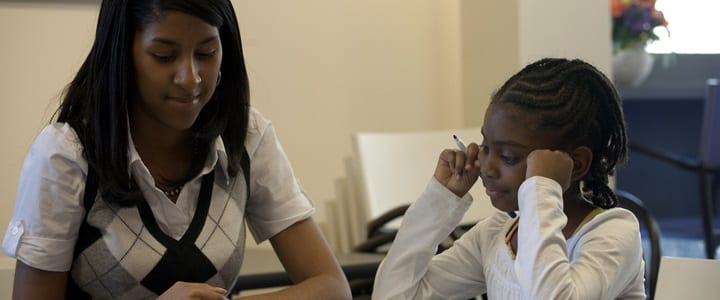
Do you want to make learning German more entertaining and engaging for your child? German teacher Noel S. shares three ways to make learning German fun for kids…
Let’s face it, learning German for kids can be tough—not to mention intimidating. From mastering a long list of complex vocabulary words to perfecting the pronunciation of various words, it can be difficult for kids to stay engaged and motivated. By implementing fun games and exercises into their curriculum, however, you can make learning less overwhelming and more enjoyable. Below are three exercises you can use to make German for kids more fun:
First Activity: “Simon Says”
Every child loves a game of old-fashion Simon Says, or in this case, Simon Sagt. Not only will this classic game keep your child engaged, but it will also help him or her practice common German commands. Before you begin the game, review the eight basic German commands seen below.
Note: If you don’t have a blackboard or whiteboard, simply substitute another household item.
Once your child has taken some time to get familiar with the commands, you’re ready to play! As the adult, you’ll take on the role of Simon and issue commands to your child (for example: Simon sagt Stehen Sie auf). To make things interesting, try keeping score!
- Stehen Sie auf: Stand Up
- Setzen Sie sich: Sit Down
- Machen Sie das Buch zu: Open Your Book
- Gehen Sie an die Tafel : Go to the Blackboard
- Schreiben Sie an die Tafel: Write on the Whiteboard
- Gehen Sie an die Tür: Go to the Door
- Hånde Klatschen : Clap Hands
- Beschreiben Sie das Bild: Describe the picture
Second Activity: “Name That Person”
If your child is a visual learner, this next activity will be very beneficial as it uses images to help him or her absorb ideas and concepts. First, gather photos of the following hobbyists or professionals: dancer, singer, scientist, hiker, tennis player, world traveler, pianist, and whomever else you’d like to add. Next, compile a bank of descriptive statements in German that describe each hobbyist or professional (for example, “Ich spiele gern das Klavier.” means “I enjoy playing the piano.”)
Now comes the fun part… Place the photos in front of the student where they are visible and read one description at a time out loud. Next, have the student point to the appropriate photo in which the description best describes. If your child is at an intermediate level, try setting a time limit for them to answer.
Third Activity: “Likes and Dislikes”
Does your child need help with adverbs? This activity will help him or her practice both, while staying engaged. First, review the common adverbs used to rate one’s likes and dislikes. Examples include:
- Besonders: Particularly
- Sehr: Very
- Nicht sehr: Not much
- Nicht: Not
- Gar nicht: Not at all
Once your child has these adverbs down pat, show him or her pictures of various categories like video games, foods, perfume, bicycles, etc. and have them rate their preferences using one of the words listed above. Then, ask him or her to say the completed statement out loud to ensure proper pronunciation.
German for kids isn’t easy. If your child is struggling to stay engaged, try working with an experienced German teacher who has the tools to make learning fun and easy.
 Noel S. teaches German and music lessons in Beachwood, OH. He minored in German during his undergraduate studies and holds a Masters degree in music from Dusquesne University. Noel has been teaching since 2001. Learn more about Noel.
Noel S. teaches German and music lessons in Beachwood, OH. He minored in German during his undergraduate studies and holds a Masters degree in music from Dusquesne University. Noel has been teaching since 2001. Learn more about Noel.
Photo by US Department of Education
Brooke Neuman

